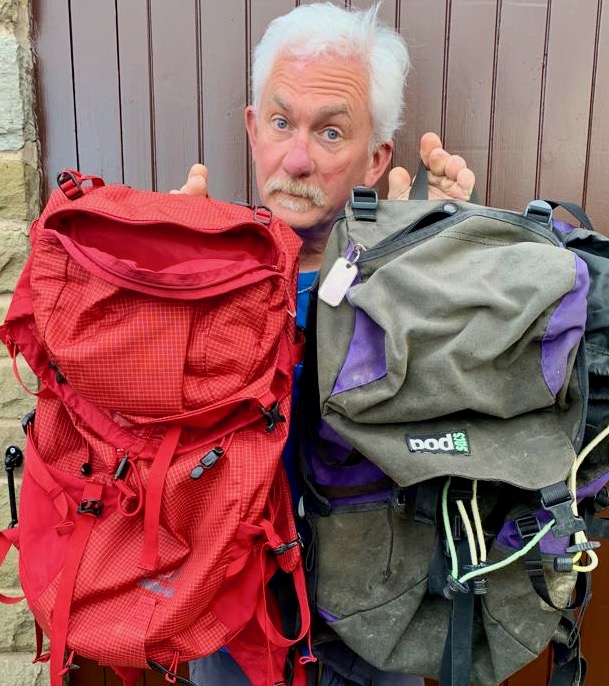
The phrase ‘Climate Emergency’ has brought forth a plethora of marketing opportunities and the internet is filled with people banging on about their ‘Green Credentials’. Whether you are a ‘Greenwasher’ or not, we can take simple steps to reduce our impact on the planet; the kit we use and the clothes we wear can have an enormous affect.
Regardless of make, colour or credentials, the volume of clothing and kit we now possess is disturbing. You only have to compare an antique wardrobe to a modern walk-in wall of doors. Few of our grandparents (or parents come to that) had long racks of coats, fleeces or trousers. They’d use a single pair of boots, one rucksack and a simple waterproof. They ‘made do’. A survey by environmental group WRAP estimates that the UK’s wardrobes hold 1.6 billion unworn garments..! Most people now have so much kit they don’t know what to do with it; which all has to be made, packaged, shipped and sold to you – the consumer. It’s cheap, disposable and worst of all – fashionable. I used to work with companies who gave me another T-shirt/coat/mug/bottle/bag etc every year and many Brand Ambassadors were only there for the free kit (and made it very obvious too).
We may complain about plastic pollution, but I see few folk shunning single use bottles (go to any Motorway Service Station or Airport). We may complain about fabric particles in our water, but we still pile into Primani. We may shout about sustainability, but a great deal of what we consume is made across the world and relies on international shipping (and look what happened to that last year). We all want the latest phone, watch and computer regardless of the cost. We justify many of these purchases because they can be recycled (and I question that), but I wonder if we should be buying them in the first place..?
After 25+ years of hard service, I’m finally retiring my POD rucksack. It’s been on many expeditions overseas, climbed through years of Scottish winters and been generally abused, bashed and bruised. I’ve often been called ‘The grey haired bloke with the old bag’ and I will never win a fashion show, but I don’t care. I bought the bag 2nd hand for £30 and have used it until holes have worn through the fabric and the material is sun bleached. It may be a little heavier than the latest kit, but its been a workhorse. I care little for fashion, preferring function in the mountains and I looked long and hard for a replacement. I’ve purchased an Alpkit Orion and wonder if my new bag will last another 25 years..? Time will tell.
I remember climbing with Andy Nisbit in the Highlands – the man who wrote the book when it came to Scottish winter routes. He was a delightful chap who devoted his life to the mountains and used the oldest and most beaten kit you could ever imagine..! When we first met, I wondered who he was with his battered axes and coat, but now I understand. Why do you change things for the sake of change..? We need to be safe and ropes etc have lifespans, but I often think of Andy when I’m glueing up a hole on my over trousers after another crampon stab..!
People throw kit away for the smallest of faults – a failed zip or a hole, but I’m glad when companies such as Patagonia, Alpkit and Terra Nova Equipment carry out repairs. I’m fortunate that a local cobbler resoles my boots and I know a lady in town who will adapt and repair clothing. You can also wash anything these days and extend its life, rather than buying new.
Before we stand on our pedestals waving our latest ‘environmentally sustainable kit’ or ‘industrially compostable cup’, we should look within.
Whatever and wherever we’re purchasing, we should ask ourselves a simple question.
Did we need it in the first place..?